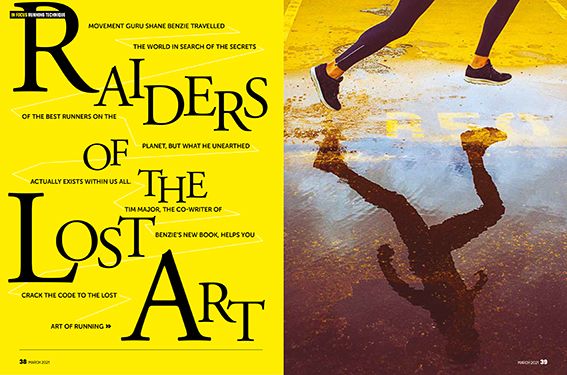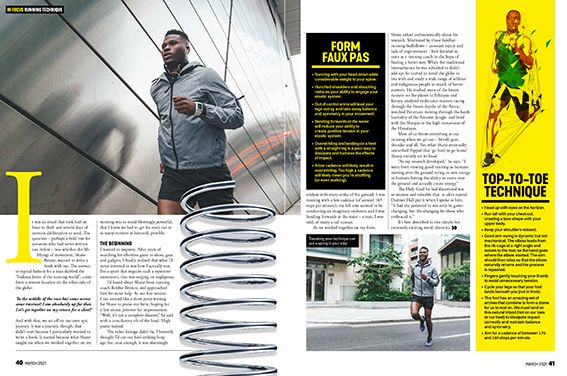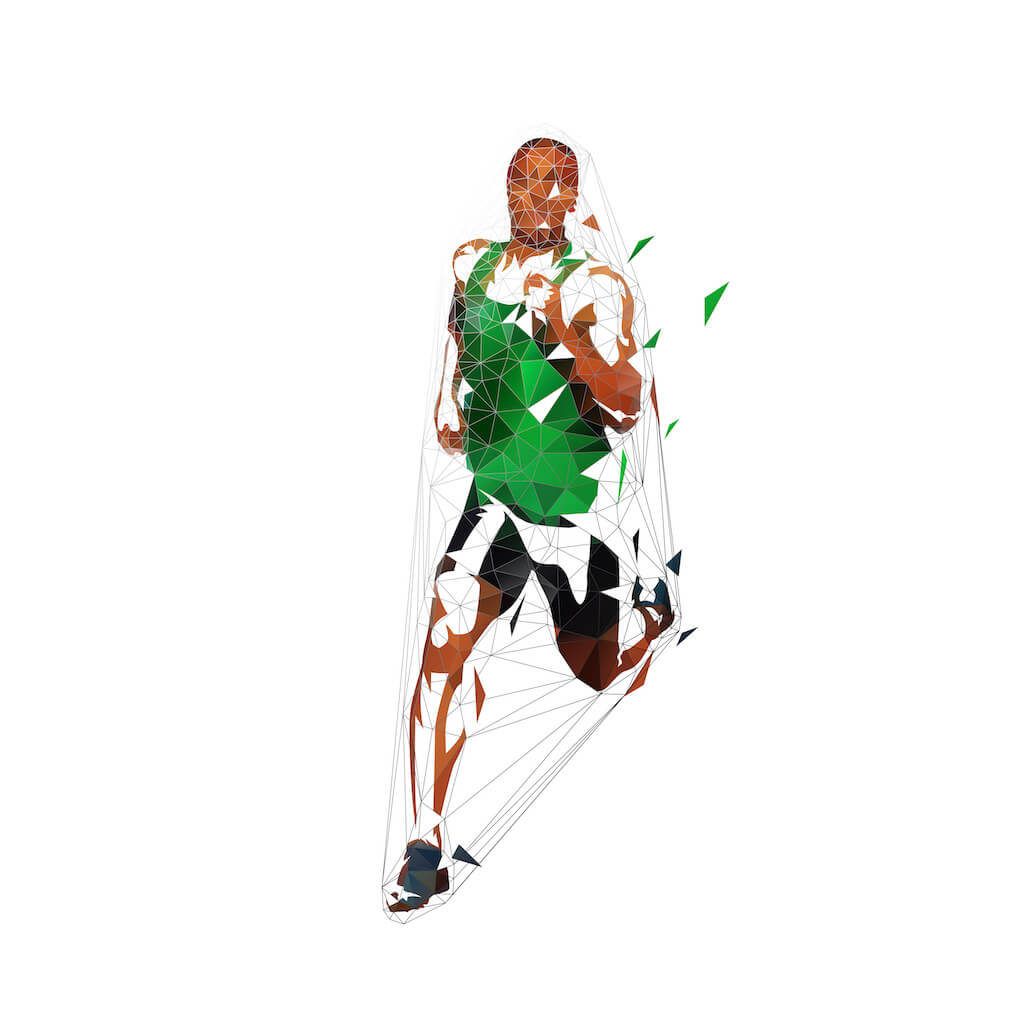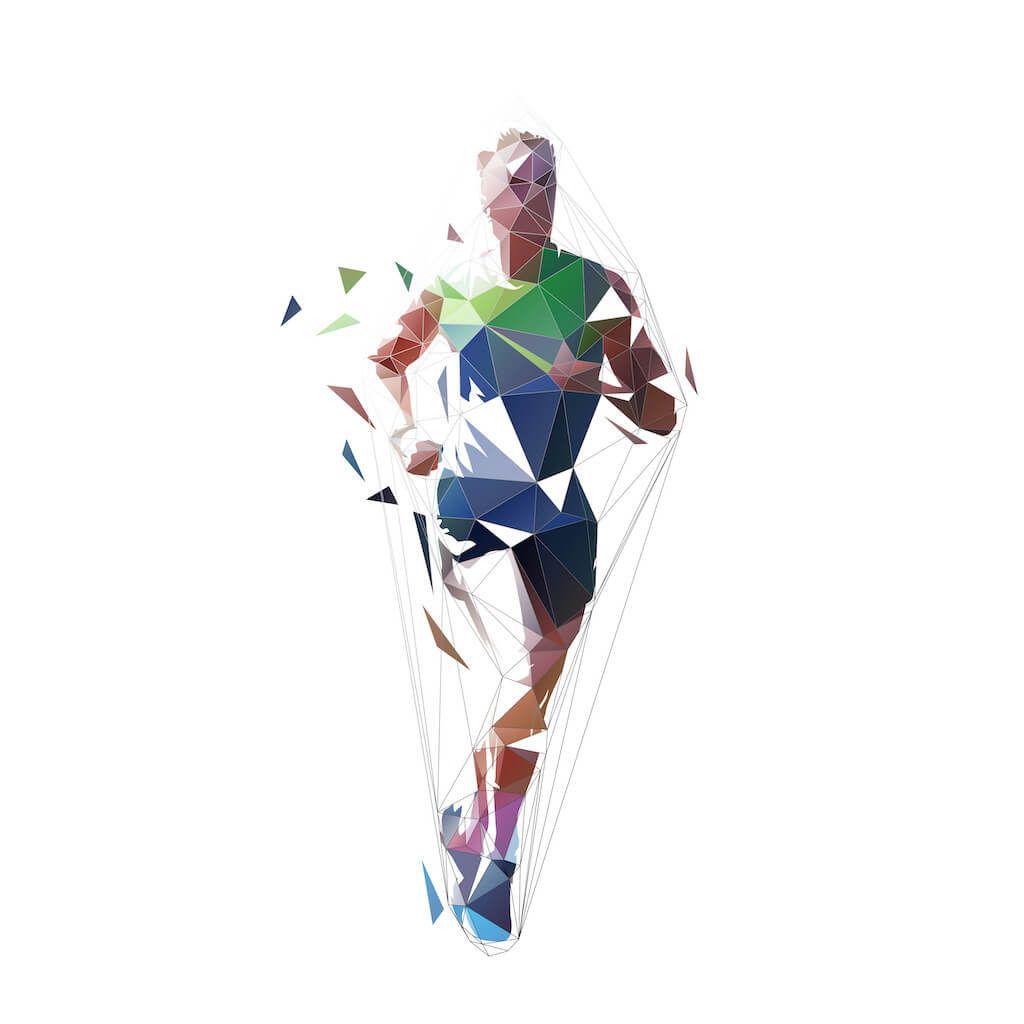5 STEPS TO IMPROVE YOUR RUNNING TECHNIQUE
Men's Fitness, words by Tim Major
Benzie travelled the world in search of the secrets of the best runners on the planet, but what he unearthed actually exists within us all.
Tim Major, the co-writer of Benzie’s The Lost Art of Running, offers five of the key lessons outlined in the book.


1. Run tall
Our fascial system runs up our body like giant elastic bands, from our toes to the top of our skull.
Run hunched over with your head down and those elastic bands will be loose and there will be very little recoil, meaning your muscles take all of the strain.
If you put height in your body by adopting a tall elegant posture, you create tension in that system. This provides energy to help propel you forwards.
Your perception of how you move also plays a significant role. If you think that you’re trudging along aimlessly, that mindset will be reflected in your posture.
We must therefore think of ourselves as tall, dynamic, elastic, connected and synergistic.
2. Make an impact
The traditional running rule book vilifies impact. Create too much bounce, it says, and you’re wasting energy in gaining height and creating impact that could harm you when you land.
As a result, Shane says that we are “doubly compromised”. Not only does our fear of impact suck us to the ground and encourage an unnatural inefficient shuffle but, from his research on thousands of runners, it appears to make very little difference to the levels of impact created.
What we do as a result is dissipate impact poorly, leading to a jarring running style that lacks dynamism and actually increases our risk of injury.
The key is to use the impact we create to our advantage. We do that by landing correctly and harnessing the resultant energy to launch into our next step.
3. Call to arms
“It looks like you only brought them with you because you couldn’t leave them at home.”
That was Shane’s assessment of my arm movement when he first watched me run.
As a species, we actually run with our arms. They are the ultimate scene setters for the cadence and rhythm in our body.
If we use our arms dynamically, they provide propulsion and direct positive momentum in our legs (our right arm’s movement is symmetrical with our left leg and our left arm’s with our right leg).
This will happen whether we like it or not but taking ownership of our arms will provide balance, symmetry and purpose in our movement.


4. Keep your head up
Your head should be up with your eyes focused on the horizon.
The average human head weighs 12lb. For every inch that you tilt your head forwards, you add a further 10lb of weight to your spine.
Tilt it forwards a mere three inches and you’re running around with the equivalent of a 42lb head!
As runner, author and radio presenter, Vassos Alexander, recently commented in an episode of the most excellent Free Weekly Timed Podcast, when you’re struggling on a run, the act of adjusting your head position “really works”.
It quite literally takes the weight off.
5. How we live is how we run
Our dynamic movement is largely based on posture and our dynamic posture will only ever be an extension of our everyday posture.
How we sit, stand and walk is therefore vital to how we run.
If you sit hunched over a laptop for eight hours a day, you will take that posture with you on your run.
What Shane discovered is that the ‘negative nurture’ present in so many parts of the western world – due to how we sit, stand and generally live our lives – has meant that we have forgotten how to engage our elastic system.
Our fascia has then joined us in forming an unnatural posture. Even for the millions of us who are guilty of this, though, there’s hope.
“Our elastic system is never more than seven months old,” Shane explained. “If I bumped into you at the start of last summer, by now your fascia will have completely rearchitected itself.
“The exciting thing is that it does so based on how it breaks down. If you start to move beautifully and be more elegant in your posture, your fascia will rejuvenate in that form.
“If we do it right, then, standing at a desk for eight hours a day can actually be training!”